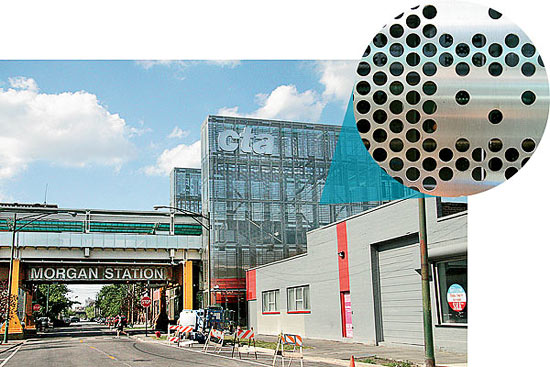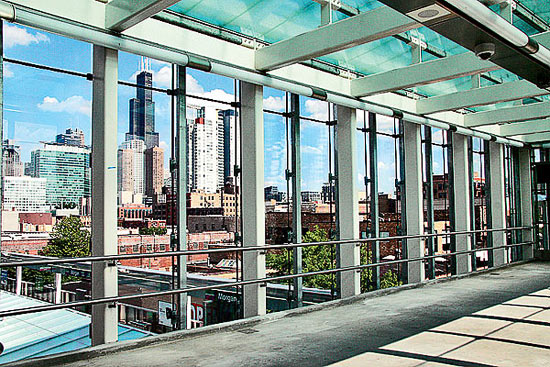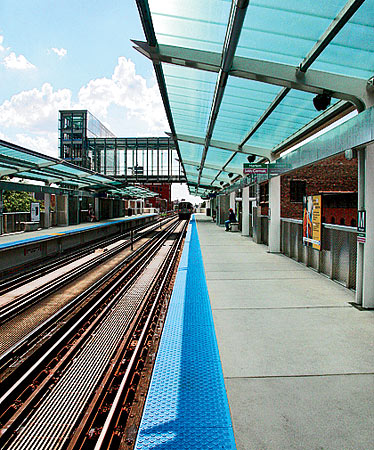Interview by Dirk Johnson

Claypool at the CTA’s new station at Morgan and Lake Streets
The decision to shut down the south branch of the Red Line for five months next year angered a lot of people. Was it really necessary?
The Red Line has been deteriorating so fast that otherwise, within a number of years, we would have had to shut it down completely. Service has become so slow that people are spending an average of an extra four days a year on the train.
How are you going to help South Side riders get around?
There will be massive [numbers of] additional buses scheduled. We’ll have shuttles to the Green Line, which runs parallel to the Red Line from 63rd Street north. We’ll be adding trains to the Green Line to accommodate the increase in riders. I think folks who now take east-west buses to the Red Line will discover it will be convenient to take the bus north to the Green Line. We’re also talking to Metra about a way for our riders to use that option. It’ll be a little tricky, but we will have customized plans in place.
What’s your plan to keep riders safe from the rash of violent crime on el trains lately?
We’ve installed 3,340 security cameras at rail stations. We’re getting studio-quality photographs of these thugs. It’s resulted in capturing numerous violent repeat offenders. The CTA is also spending $10 million for 50 additional Chicago police officers, who will supplement the transit police we have already. Safety is more important than anything else. (For more on fighting crime in the city, see “Garry McCarthy Under the Gun.”)
What’s your strategy regarding raising fares, now and in the next few years?
My strategy is to avoid fare increases—and to avoid cuts in service. We’ve been through a lot of that. In 2009, we raised fares. And then in 2010, we had deep cuts in service—18 percent on buses, 9 percent for rail—and we laid off 1,100 workers. The combination of higher fares and reduced services leads to a rapid downward spiral. We can’t have that.
You will soon face negotiating a new contract with CTA employees. Will the transit union need to accept concessions?
Yes, labor must meet us halfway. We’re not asking for wage cuts, but restraint in growth of wages. Our generous health care plan is out of line. And we’ve got to reform our work rules. As it is now, we have to carry operators with drunk-driving convictions for six months. We’re required to pay full freight for them. They do clerical work, but that’s not what they were hired to do. We also need to focus on absenteeism. Now, I want to emphasize that 90 percent of our workers play by the rules. They show up every day. They work hard. We’re talking about the other 10 percent. They’re costing us a lot of money.
What’s your relationship with the transit union leaders?
Admittedly, it got off to a poor start. But it’s gotten better. We’ve worked hard and had some great talks with Robert Kelly of Local 308. We’re making progress. It’s slower than I’d like, but it’s progress.
How do you feel about the proposal from John Gates, the chairman of the Regional Transportation Authority, to better integrate the CTA, Metra trains, and Pace buses?
Apparently Mr. Gates isn’t aware of some of the steps we’ve been taking. To cite one example, the CTA and Pace are implementing a new open-fare system [which will allow customers to tap their credit or debit cards on a touchscreen to pay for their rides], and we have agreed to restructure overlapping bus service. It’s actually the RTA bureaucracy that has wasteful and duplicative practices. Other agencies are cutting.
What annoys you personally about the service of the CTA?
Just about every day I see something that needs to be changed or fixed. My staff knows because I’ll call and complain to get something moving to address it. Mostly I’m concerned, though, with structural matters—righting the financial ship. And we will. We had a record numbers of rides in my first year [which ended May 2012]: about 543 million. I’d like to think it has something to do with our improvements, but I think the price of gas and the high cost of parking are driving it too.
You were a key member of Obama’s media team for the 2008 election. Are you involved in this campaign? How do you think it’s been going so far?
Oh, I wish I could be involved in the campaign, but running the CTA is a full-time job. Since I’m not an elected official anymore, I no longer opine about politics—except to say that I’m fully supportive of President Obama, and I think the campaign is doing a very good job.
What about your future? Any chance you will run for office again?
The odds of that are pretty slim. Realistically, when I chose not to run for Cook County Board president in 2010, I knew that I was probably walking away from any possibility of elective office.
* * *
A Fare Trade
Some of what $38 million bought at the new CTA station at Morgan and Lake

ART The die-cut pattern in the 60-foot-tall glass and steel entry towers lets in light and evokes the area’s industrial past.

EYE CANDY The sky bridge linking the inbound and outbound platforms provides a stunning skyline view.

SHELTER FROM THE STORM The translucent canopies were modeled after awnings used at local businesses.
Photography: (Claypool) Chris Strong; (Morgan Station) Caoimhe McDonnell


